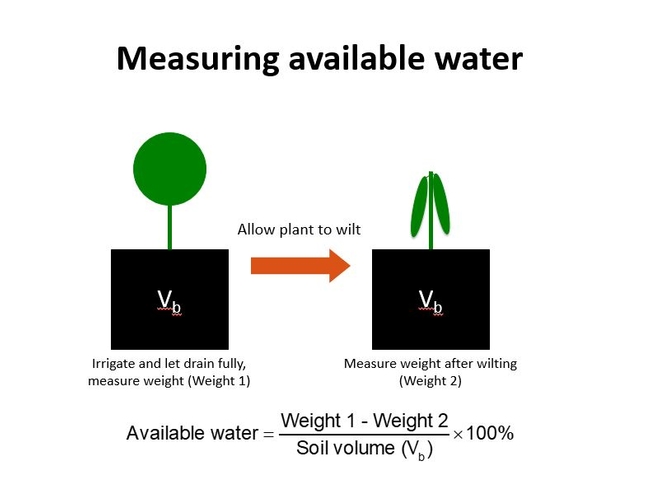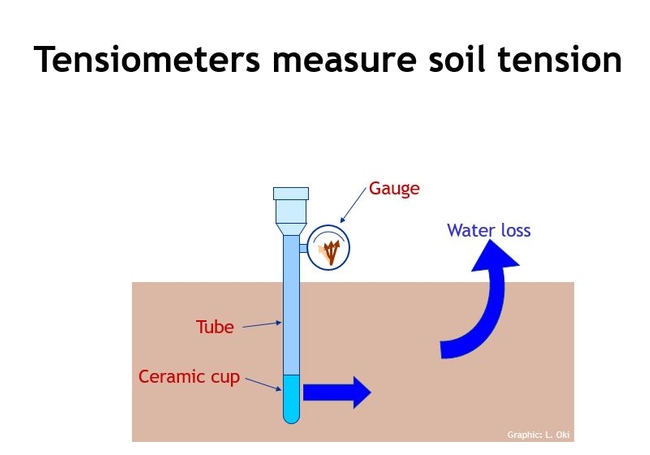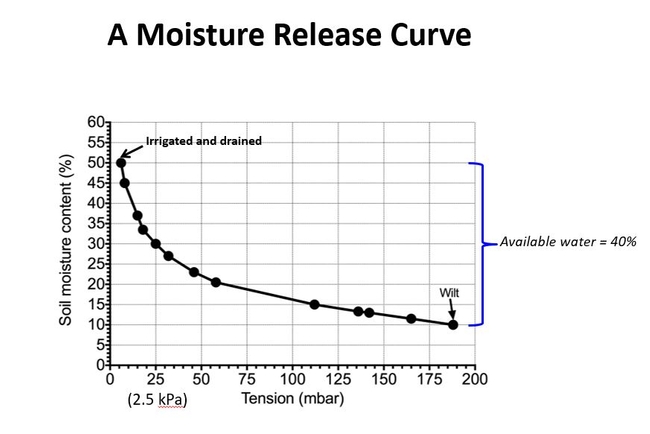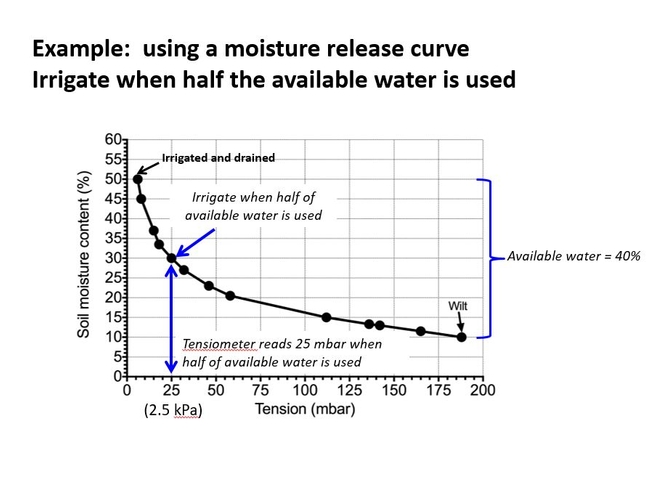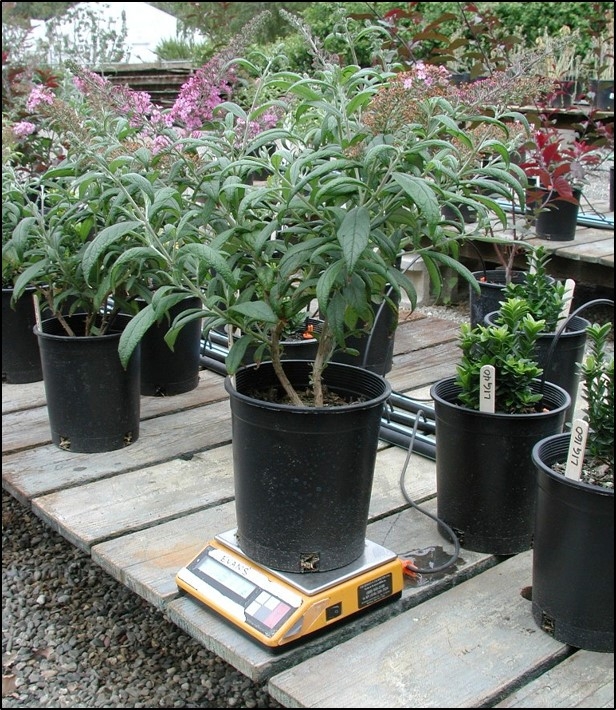When should container plants be irrigated? How much water should be applied? In this post, I describe the first step of irrigation scheduling, “when”, and the next post covers “how much”. First some background describing soil tension, available water, and the moisture release curve.
After irrigation and full drainage (container capacity), the plant removes water at first from the larger soil pores and then eventually from the smaller soil pores. The water is held more tightly by the smaller pores. As the soil becomes even drier, the soil pulls the water so tightly that the plant eventually begins to wilt. The “pull” that soil exerts on water is called soil tension. The amount of water held by the soil between container capacity and the wilting point is called the available water because it is the water that is available for plant uptake. Here's a relatively simple way to determine the available water. In practice, this would be done with several representative plants. Fig 1.
Soil tension can be measured by soil tensiometers. A tensiometer consists of an air tight, water filled tube with a porous ceramic tip at the bottom and vacuum gauge at the top. As soil dries, the soil sucks water from the tube, creating a vacuum, that translates to a measurement at the gauge. The soil tension is a negative pressure and is measured in recognizable units of pressure such as psi, centibars, milibars, and kilopascals. Fig 2.
With respect to the plant, not all available water is easily available water. This can be seen in a moisture release curve. A moisture release curve, expresses the relationship between the amount of water held in the soil and the soil tension. It is determined by irrigating a plant, allowing it to drain to container capacity, weighing it regularly up to the point that the plant wilts, and measuring the corresponding soil tension with a tensiometer. Generally, a curve such as this is obtained. Fig 3.
In a typical container soil, at container capacity, much of the water is not held tightly and is easily available to the plant (steep part of curve, low tension values). As the easily available water is removed, the remaining water is held more tightly (shallow part of curve, high tension values). Plants grow better at the lower soil tensions. Research has shown that plants should be irrigated when they have used half of their available water roughly corresponding to the point at which soil tensions rise rapidly. Fig 4.
In the example above, it would be recommended to irrigate at the point corresponding to about 25 mbar (2.5 kilopascals). At this point, water would be removed from most of the coarser pores. As the remaining available water is removed from finer pores, the tension begins to rise rapidly. In this illustration, wilting occurs at a tension of about 190 mbar (19 kPa). Note that there is still water in the soil (roughly 10% by volume), but it is unavailable to the plant. Other container soils (and field soils) have similar shaped curves.
Tensiometers are not used much in container culture for various reasons. Intuitively an experienced grower or person responsible for irrigation scheduling picks up the pot and feels its weight. Simply, when the pot “feels light”, an irrigation is scheduled. Well here is my recommendation to improve on that by knowing the available water and quantifying the change in weight over time. Fig 5.
First, determine the available water by weighing representative plants at container capacity and again when the plant wilts. The difference is the available water (see Fig 1 again if you need to). Now, monitor the daily change in weight. Start by measuring the weight of the pot just after an irrigation and drainage. Weigh again every day. The change of weight (in grams) during a 24- hour period represents the volume (milliliters) of water removed per day by the plant. (One gram of water equals one mili-liter of water). Irrigation should occur when half of the available water is used. That amount of water is what the plant extracted from the soil and evaporated from the soil surface. You would think that might tell you also how much water to apply to fill the soil completely back up with water. But actually some adjustments are still needed to calculate how much water to apply.
Next: The adjustments for salinity and irrigation uniformity and examples.
Figures and tables adapted from: Management of Container Media by Richard Evans, UC Davis, for the class, ENH 120.
